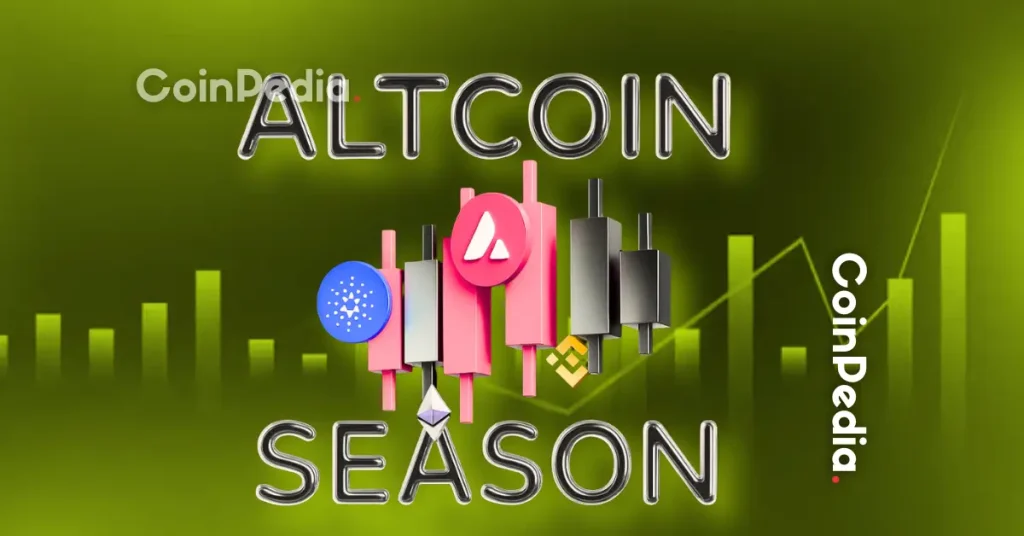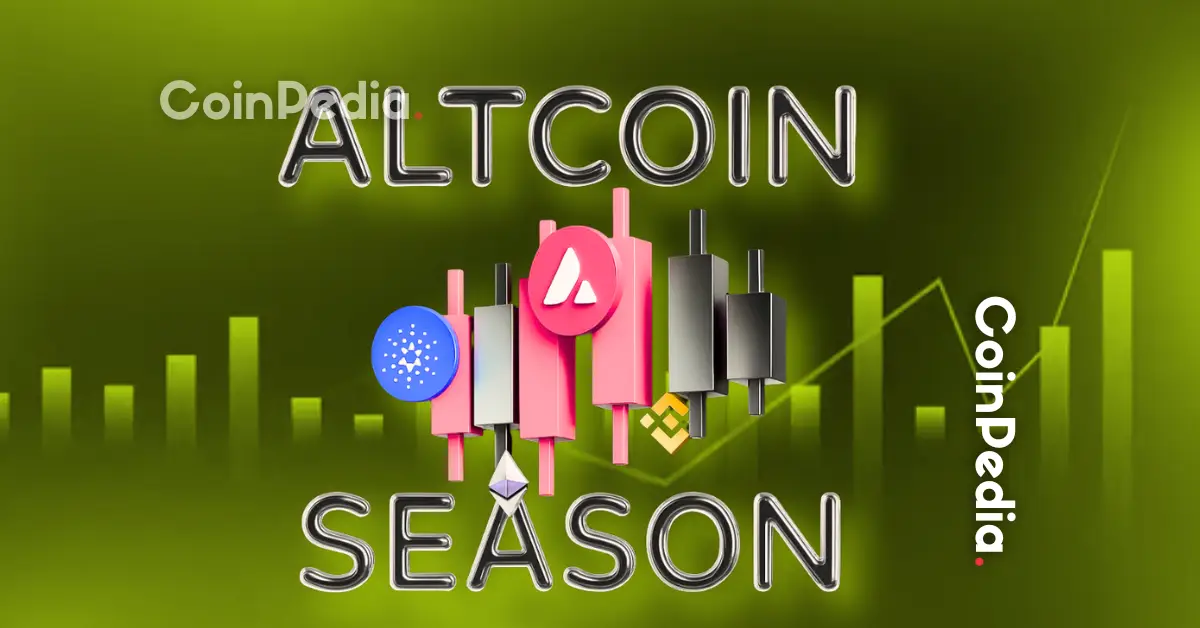
Decoding the Crypto Winds: Analyzing Bitcoin Dominance and the Looming Altcoin Season in August 2025
Introduction: The Ever-Changing Crypto Tides
The cryptocurrency market is a dynamic ecosystem, characterized by its volatility and rapid shifts in investor sentiment. As we approach August 2025, the interplay between Bitcoin and altcoins is once again capturing the attention of market participants. Bitcoin dominance, a key metric that reflects Bitcoin’s share of the total cryptocurrency market capitalization, has been on a downward trajectory. This decline has sparked speculation about an impending “altcoin season,” a period where alternative cryptocurrencies outperform Bitcoin. This report explores the factors driving this potential shift, the historical patterns that may provide insights, and the strategies investors can employ to navigate this evolving landscape.
The Bitcoin Dominance Pendulum: A Swing of Influence
Bitcoin dominance is a critical indicator of market sentiment. When Bitcoin’s dominance rises, it suggests that investors are seeking the relative safety and stability of the world’s largest cryptocurrency. Conversely, a decline in Bitcoin dominance indicates a growing appetite for risk, as investors rotate capital into altcoins in search of higher returns.
In recent months, Bitcoin’s dominance has fallen from highs above 64% to around 59%. This decline, though not drastic, has ignited speculation about an altcoin season. The rationale behind this speculation is straightforward: as Bitcoin’s market share contracts, capital flows into altcoins, driving their prices upward. However, it’s essential to note that Bitcoin dominance is not a linear trend. It can fluctuate based on various factors, including market sentiment, regulatory developments, and macroeconomic conditions.
Echoes of the Past: The 2021 Pattern
History often provides valuable insights into future market behavior. One compelling argument for an upcoming altcoin season stems from the similarities between the Bitcoin dominance chart in 2021 and its current formation in 2025.
In 2021, a falling wedge pattern emerged on the Bitcoin dominance chart. This pattern, characterized by a series of lower highs and lower lows, is typically interpreted as a bullish signal. The falling wedge in 2021 preceded a sharp decline in Bitcoin’s dominance, which then triggered a massive altcoin season. During this period, many altcoins experienced significant gains, with some even outperforming Bitcoin by substantial margins.
The reemergence of a similar pattern in 2025 has led some analysts to believe that history might be poised to repeat itself. If Bitcoin dominance continues to decline as it did in 2021, altcoins could be on the verge of a significant rally. However, it’s crucial to remember that past performance is not a guarantee of future results. Market conditions in 2025 are different from those in 2021, and other factors may influence the outcome.
Defining Altcoin Season: More Than Just Hype
The term “altcoin season” is often used loosely, but it’s essential to understand what it truly entails. An altcoin season is not merely a few altcoins experiencing short-term gains. Instead, it’s a sustained period where a broad range of altcoins outperform Bitcoin, driven by a shift in investor sentiment and capital flows.
One way to quantify altcoin season is through the CMC Altcoin Season Index. This index tracks the performance of the top 100 altcoins relative to Bitcoin over the past 90 days. A high index value indicates that altcoins are collectively outperforming Bitcoin, while a low value suggests the opposite.
Another metric used to define altcoin season is when 75% of the top 50 cryptocurrencies, excluding stablecoins and asset-backed tokens, outperform Bitcoin over a 90-day period. Currently, around 50% of the top altcoins have recorded better gains than Bitcoin in the last three months. This suggests that while altcoin season may not be in full swing yet, the conditions are ripening.
The Catalysts: What’s Driving the Shift?
Several factors are contributing to the potential shift in market dynamics, driving the narrative of an impending altcoin season.
Institutional Interest in Altcoins
Institutional investors, once wary of the altcoin space, are increasingly exploring opportunities in this segment of the market. This growing institutional interest provides more significant capital inflows, potentially driving up the prices of altcoins. As institutions allocate more capital to altcoins, it can create a positive feedback loop, attracting more investors and further fueling the rally.
Ethereum’s Ascendancy
Ethereum, the second-largest cryptocurrency by market capitalization, is often seen as a bellwether for the altcoin market. Recent surges in Ether treasuries and positive price action for ETH suggest that the platform and its associated tokens are gaining momentum. Ethereum’s success can have a ripple effect on the broader altcoin market, as many altcoins are built on or closely tied to the Ethereum ecosystem.
Technical Indicators
Certain technical indicators are also pointing towards a potential altcoin rally. For instance, the cup-and-handle pattern observed in the altcoin market capitalization chart projects a potential rise to $2.78 trillion. This technical setup, if confirmed, could fuel the altcoin season narrative and attract more investors to the space.
Bitcoin’s Consolidation
After reaching a new all-time high of $123,091 in July 2025, Bitcoin experienced a slight pullback, slipping to $118,000. This consolidation period for Bitcoin could allow altcoins to catch up and potentially outperform the market leader. As Bitcoin takes a breather, investors may seek opportunities in altcoins, driving their prices upward.
The Counterarguments: Why Altcoin Season Might Be Delayed
Despite the optimism surrounding altcoin season, several factors could delay or even derail the anticipated rally.
Bitcoin Dominance Rebound
While Bitcoin dominance has declined, it’s not a one-way street. Bitcoin dominance could regain momentum, drawing capital back into the leading cryptocurrency. A rebound in Bitcoin’s dominance would likely dampen the altcoin rally, as investors flock back to the relative safety of Bitcoin.
Market Liquidation
Geopolitical tensions and market liquidations can negatively impact the entire crypto market, including altcoins. Sudden market downturns can trigger risk-off behavior, leading investors to seek refuge in Bitcoin as a safe haven. This shift in sentiment could delay or derail the altcoin season.
Overbought Conditions
If altcoins become excessively overbought, it could lead to a correction, dampening the altcoin season momentum. Analysts recommend buying altcoins when the Relative Strength Index (RSI) drops below 25-30 on 4-hour or daily timeframes, indicating oversold conditions. If altcoins enter overbought territory, a pullback may be imminent, delaying the altcoin season.
Meme Coins Mania: A Double-Edged Sword
The rise of meme coins is another factor to consider. While meme coins can contribute to the overall excitement and volatility of the altcoin market, they can also be a sign of excessive speculation. A peak in meme coin mania often precedes a market correction, potentially hindering the progress of a broader altcoin season.
Meme coins, such as Dogecoin and Shiba Inu, have gained significant attention and market capitalization in recent years. However, their prices are often driven by hype and social media trends rather than fundamental value. As a result, meme coins can be highly volatile and prone to sudden price swings. While they can contribute to the overall excitement of the altcoin market, they can also be a sign of excessive speculation, which may lead to a market correction.
Navigating the Altcoin Landscape: A Strategic Approach
If altcoin season does materialize, navigating the landscape requires a strategic approach. Not all altcoins are created equal, and identifying those with the strongest fundamentals and growth potential is crucial.
Focus on Utility and Innovation
Projects with real-world use cases, innovative technologies, and strong development teams are more likely to sustain long-term growth. Investors should prioritize altcoins that solve real-world problems, have a clear value proposition, and demonstrate strong adoption and partnerships.
Diversify Your Portfolio
Spreading investments across a range of altcoins can help mitigate risk and increase the chances of capturing significant gains. Diversification is a key strategy in any investment portfolio, and the altcoin market is no exception. By allocating capital across various altcoins, investors can reduce their exposure to any single project and increase their chances of benefiting from the overall altcoin rally.
Manage Risk
Altcoins are inherently more volatile than Bitcoin, so it’s important to manage risk by setting stop-loss orders and allocating capital responsibly. Investors should only allocate a portion of their portfolio to altcoins and should be prepared for the possibility of significant price swings. Setting stop-loss orders can help limit potential losses, while responsible capital allocation can ensure that investors do not overexpose themselves to the volatile altcoin market.
Conclusion: A Time of Opportunity and Caution
The cryptocurrency market stands at a pivotal moment. Bitcoin’s declining dominance, historical patterns, and growing institutional interest in altcoins suggest that an altcoin season might be on the horizon in August 2025. However, caution is warranted. Market conditions can change rapidly, and factors like Bitcoin’s potential rebound, geopolitical tensions, and market liquidations could derail the altcoin rally.
By carefully monitoring market indicators, conducting thorough research, and managing risk effectively, investors can position themselves to potentially capitalize on the opportunities that altcoin season may bring. Whether this turns out to be a fleeting moment or a sustained surge, the coming weeks promise to be an exciting chapter in the unfolding story of cryptocurrency. As always, investors should approach the market with a balanced perspective, weighing the potential rewards against the inherent risks.





